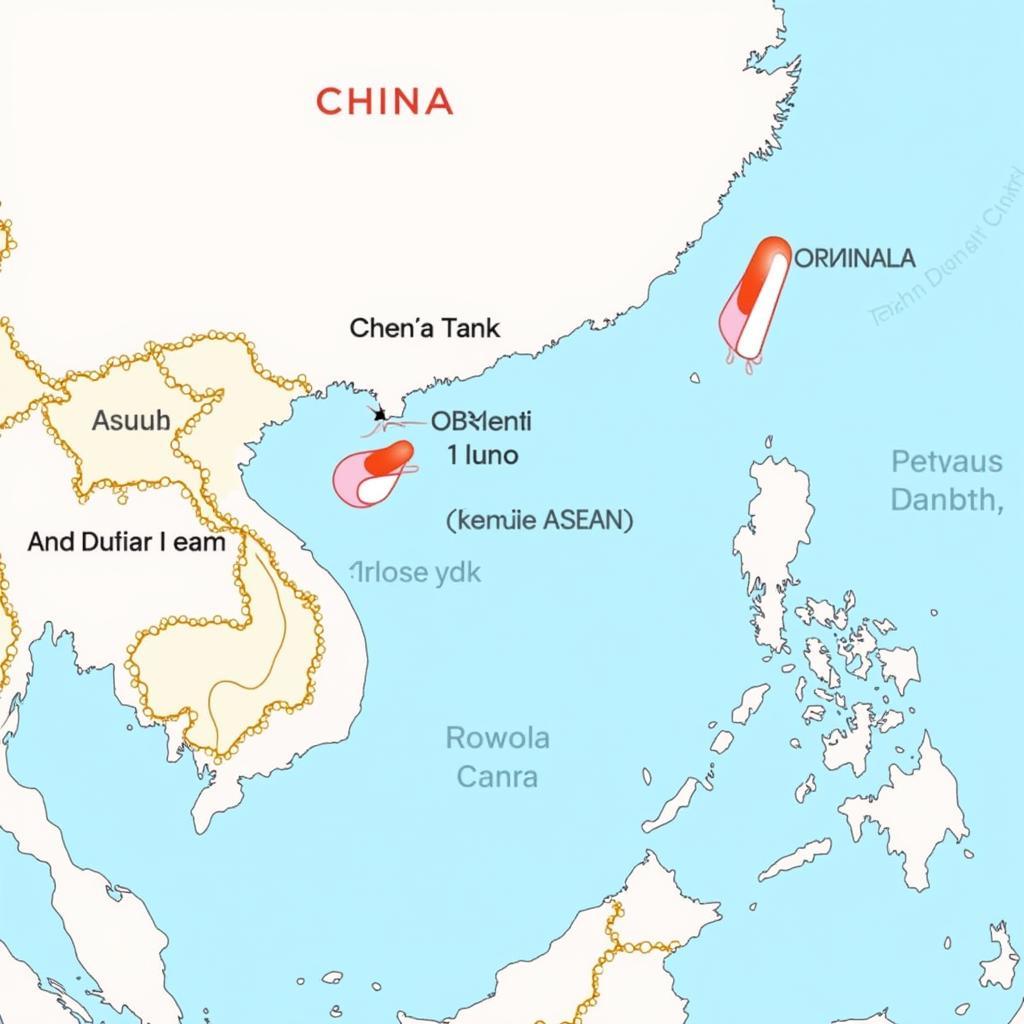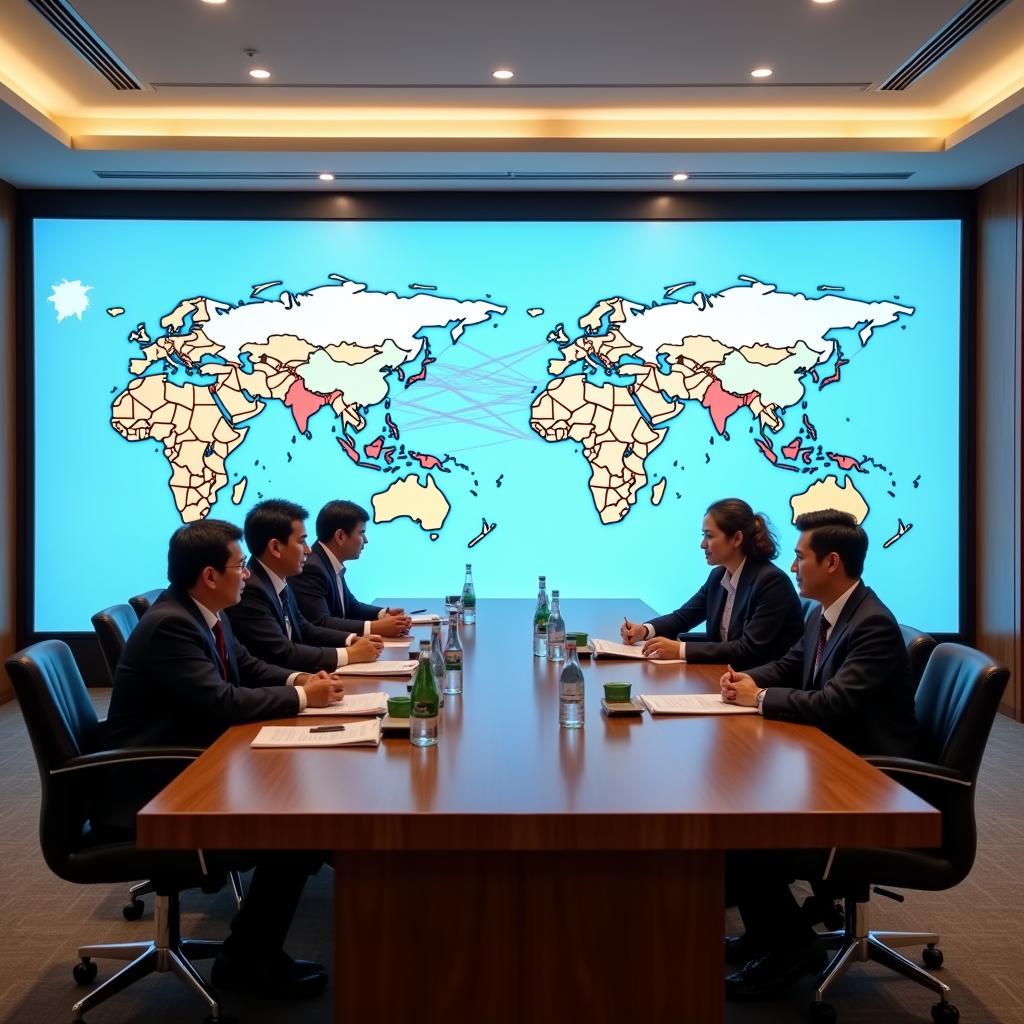The phrase “Asean Alliance Against Red China” often surfaces in discussions about geopolitical dynamics in Southeast Asia. This article delves into the complexities of the relationship between ASEAN and China, exploring the nuanced reality beyond this simplistic narrative. We’ll examine the diverse perspectives within ASEAN, the economic interdependence, and the strategic challenges that shape this crucial relationship.
Navigating the China-ASEAN Relationship: Cooperation and Competition
ASEAN, the Association of Southeast Asian Nations, is not a monolithic entity. Its member states have varying historical ties, economic dependencies, and security concerns regarding China. While some nations might be wary of China’s growing influence, particularly in the South China Sea, others prioritize economic cooperation and see China as a vital partner for development. This internal diversity makes the idea of a unified “ASEAN alliance against Red China” inaccurate. Instead, the relationship is characterized by a complex interplay of cooperation and competition.
Many ASEAN countries benefit significantly from trade and investment from China. China is ASEAN’s largest trading partner, and its Belt and Road Initiative has poured significant infrastructure investment into the region. This economic interdependence creates a strong incentive for engagement and cooperation.
However, China’s assertive actions in the South China Sea, coupled with its growing military power, have raised concerns among several ASEAN members. Countries like Vietnam and the Philippines have been particularly vocal in asserting their maritime claims and pushing back against what they perceive as Chinese encroachment. This tension adds another layer to the complex dynamic.
 ASEAN-China Economic Cooperation
ASEAN-China Economic Cooperation
Is There a Unified ASEAN Stance on China?
The idea of a unified ASEAN stance on China is a simplification. Each member state approaches the relationship based on its own national interests. While some countries might seek closer alignment with the United States or other external powers as a counterbalance to China, others prefer to maintain a more neutral position. ASEAN operates on the principle of consensus, which can make it challenging to forge a unified front on sensitive issues like the South China Sea disputes.
This lack of a unified stance does not, however, equate to an alliance against China. ASEAN members recognize the importance of engaging with China constructively on a range of issues, from trade and investment to regional security. The challenge lies in finding a balance between safeguarding national interests and maintaining a productive relationship with a powerful neighbor.
 South China Sea Maritime Disputes
South China Sea Maritime Disputes
American ASEAN Alliance: Common Interests and Challenges
The evolving relationship between ASEAN and the United States also plays a significant role in shaping the regional dynamics. american asean alliance common interests are based on shared interests in maintaining a free and open Indo-Pacific. However, ASEAN countries are cautious about being drawn into a great power competition between the US and China. They prefer to pursue a balanced approach, maintaining good relations with both powers.
The US has increased its engagement with ASEAN in recent years, emphasizing security cooperation and economic partnerships. While this engagement is generally welcomed by ASEAN members, they remain wary of becoming overly reliant on any single external power. Their primary focus remains on promoting regional stability and economic growth through ASEAN-led mechanisms.
 ASEAN-US Security Cooperation
ASEAN-US Security Cooperation
Conclusion: A Multifaceted Relationship
The notion of an “ASEAN alliance against Red China” oversimplifies a complex reality. The relationship between ASEAN and China is multifaceted, characterized by both cooperation and competition. ASEAN member states navigate this relationship based on their own national interests, making a unified stance challenging. Moving forward, finding a sustainable balance between engaging with China economically and addressing security concerns will be crucial for maintaining regional stability in Southeast Asia.
FAQ
- What is ASEAN’s official position on the South China Sea disputes?
- How does China’s Belt and Road Initiative impact ASEAN countries?
- What are the key areas of cooperation between ASEAN and China?
- What are the main security concerns for ASEAN members regarding China?
- How do ASEAN countries balance their relationships with China and the US?
- What is the role of ASEAN in maintaining regional stability?
- How does the diversity within ASEAN affect its approach to China?
Common Scenarios and Questions
-
Scenario: A small business owner in an ASEAN country wants to understand how the China-ASEAN relationship affects their business.
-
Question: What are the potential risks and opportunities for my business related to China’s growing influence in the region?
-
Scenario: A student researching the geopolitical dynamics of Southeast Asia.
-
Question: How has the ASEAN-China relationship evolved over time, and what are the key factors shaping its future trajectory?
Further Exploration
Explore more about the evolving dynamics of the region through other resources on our website.
For any assistance, please contact us at Phone: 0369020373, Email: [email protected] or visit our address: Thon Ngoc Lien, Hiep Hoa, Bac Giang, Vietnam. We have a 24/7 customer service team.


